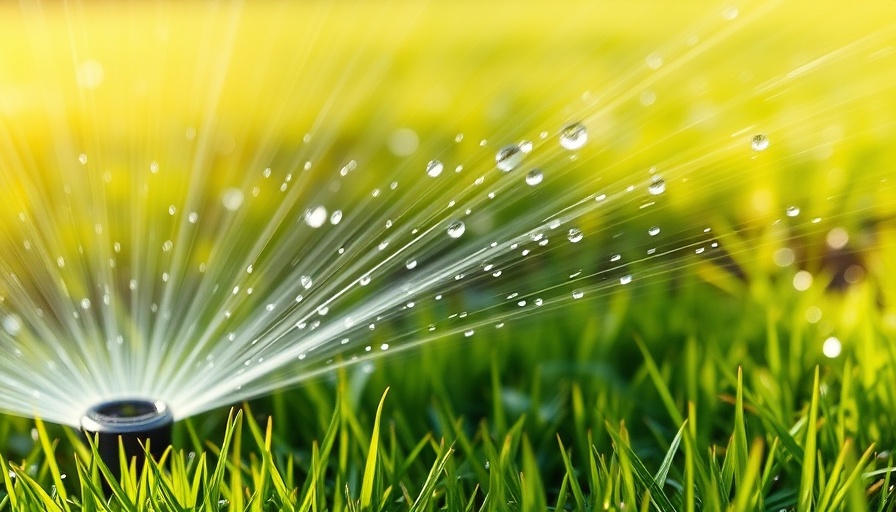
Getting Ready for Your Sprinkler System: Why Timing Matters
As the chill of winter fades and the warmth of spring takes hold, turning on your sprinkler system is essential for maintaining a healthy landscape. Homeowners and business owners alike should consider the timing carefully. Typically, the best moment to switch on your irrigation system is after the last frost date for your area, ensuring that cold soil does not lead to flooding or damage. Skipping this step could mean spending more on repairs than on your watering system.
Inspect Before You activate: A Quick Checklist
Before you dive into turning on your sprinkler, an inspection is crucial. Local weather can be unpredictable, and harsh conditions may have affected your system. Look for cracked sprinkler heads, exposed valves, and damaged pipes. If you discover issues, it's best to address them now, preventing inconvenience later. Taking a few minutes to troubleshoot can save you a fortune down the line.
Essential Tools for Sprinkler Startup
Having the right tools on hand makes turning on your sprinkler system easier and more efficient. At a minimum, gather a screwdriver, pliers, and a sprinkler valve key. Additionally, keep a pen and paper handy to jot down any concerns or repairs needed as you go through the setup process. This simple preparation offers not just convenience, but peace of mind that your system is in prime condition for the growing season.
Step-by-step Activation Guide: Getting into Action
Bringing your sprinkler system back to life this spring is straightforward if you follow a few clear steps. Start by ensuring that the main shutoff valve is closed, located in your home's valve boxes or crawl space. After confirming it is fully off, set your system controller to manual mode for full control. This allows you to test all zones to ensure they're working correctly, which is essential for avoiding dry patches or overwatering areas.
Addressing Common Concerns: The Vacuum Breaker
A vital component of your irrigation system is the vacuum breaker, designed to prevent contaminated water from siphoning back into your clean supply. Make sure this device is intact and functioning properly. These valves need regular checking, especially post-winter, to guarantee that they haven’t sustained damage. Neglecting this step could lead to more significant problems later.
Final Touch: Setting a Watering Schedule
Once your system is up and running, configuring an efficient watering schedule tailored to your landscape's needs is essential. Different plants and regions have different water requirements, and optimizing your settings can reduce water waste while promoting lush green growth. Invest time in understanding your specific plant needs to make the most of your watering system this spring.
The Payoff: A Lush Landscape Awaiting
In conclusion, the process of turning on a sprinkler system in spring is not just about watering your lawn; it’s about fostering a healthier environment. As you step outdoors into your vibrant garden or your business's welcoming landscape, take pride in your efforts and the thoughtful steps taken to preserve the beauty of your outdoor space. These moments are not simply about maintenance; they're about cultivating connection with nature and your surroundings.
 Add Row
Add Row  Add
Add 




 Add Row
Add Row  Add
Add 

Write A Comment